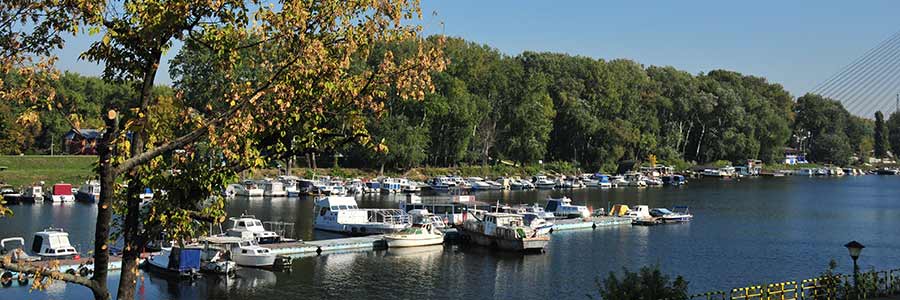Belgrade - between Holy League and Ottomans
 Thanks to its location at the confluence of the Sava and the Danube on the southeastern edge of the Pannonian Plain and along the northern border of the Balkan Peninsula Belgrade is linchpin for traffic between Central and Southeastern Europe and the Middle East. Therefore, Belgrade is often called the gateway to the Balkans. Most important landmarks of Belgrade is, towering over the Sava flows into the Danube, the often in history fought fortress of Belgrade.
Thanks to its location at the confluence of the Sava and the Danube on the southeastern edge of the Pannonian Plain and along the northern border of the Balkan Peninsula Belgrade is linchpin for traffic between Central and Southeastern Europe and the Middle East. Therefore, Belgrade is often called the gateway to the Balkans. Most important landmarks of Belgrade is, towering over the Sava flows into the Danube, the often in history fought fortress of Belgrade.
The Romans Latinized the name Singidun to Singidunum, which probably means round fortress or round town. In the 1st century BC the Romans conquered the territories to the Danube. Besides Sirmium and Viminacium, Singidunum was an important strategic point on the Via Militaris and the Danubian limes. By 86 AD, to reinforce the frontiers at Singidunum, the Roman moved experienced Legio IV. Flavia Felix to the town, which won even more importance by the Emperor Hadrian in the appointment as Municipium and later also in the rank of a Colonia by the settlement of veterans.
After successfully repelling the Turks from Vienna in 1683, the Holy League was able to push the Ottomans back beyond Belgrade in the Great Turkish War. The siege of Belgrade under the command of Max Emanuel ended on September 6, 1688 with the capture of the city. The imperial troops were able to conquer Belgrade three times (1688–1690, 1717–1739, 1789–1791), but were unable to hold it permanently. Because of this constant fighting, the Ottomans gave Belgrade the name Dar Ul Jihad (House of War).
In Ottoman times, Belgrade was an important trading city on the caravan route between Buda and Constantinople, where merchants and traders of different origins (Turks, Armenians, Greeks and Roma) lived. According to Evliya Çelebi, Belgrade had 98,000 inhabitants in 1660, of which 21,000 were of non-Islamic faith.
Es gibt keine Beiträge in dieser Kategorie. Wenn Unterkategorien angezeigt werden, können diese aber Beiträge enthalten.